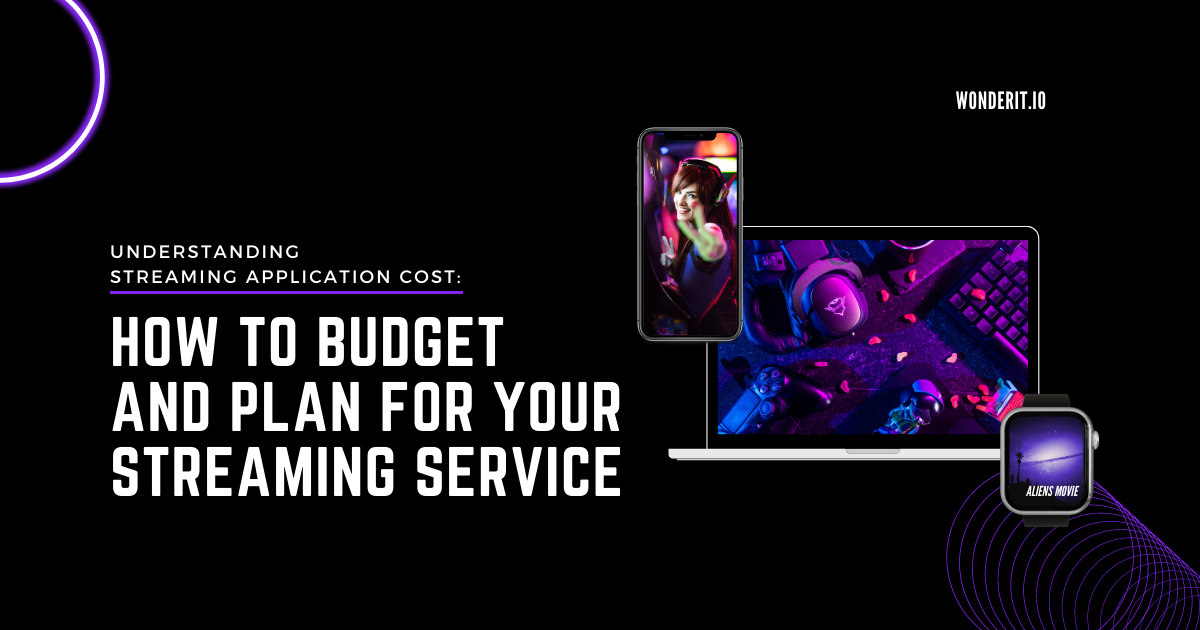Learn how to estimate the streaming application cost and plan a budget for your streaming service.
Streaming has become an integral part of our lives, from watching movies and TV shows to listening to music and playing games. As the demand for streaming services increases, more and more businesses are looking to develop their own streaming applications. However, developing a streaming application can be expensive, and it’s important to understand the costs involved in order to plan and budget effectively.
In this article, we’ll explore the factors that contribute to streaming application cost and provide tips on how to plan and budget for your streaming service.
The Rise of Streaming Application Services
With the rise of streaming services such as Netflix, Amazon Prime, and Disney+, more and more businesses are investing in streaming applications to provide their content to viewers. After all, building and maintaining a streaming application can be a costly endeavour.
Factors Affecting Your Streaming Application Cost:
- Development costs: One of the most significant costs of a streaming application is development. This includes the cost of designing and coding the app, testing, and deploying it to users. The cost of development depends on the complexity of the application, the number of features, and the technology used to build it.
- Hosting and infrastructure costs: Once your application is developed, you need to host it on a server. Hosting costs can vary widely depending on the number of users you expect, the amount of content you plan to stream, and the type of hosting you choose.
- CDN costs: A Content Delivery Network (CDN) is a network of servers that deliver content to users based on their geographic location. A CDN can help reduce the load on your server and improve the performance of your streaming application. The cost of a CDN depends on the amount of data you plan to transfer and the number of users.
- Licensing and royalty fees: To stream content, you need to have the legal rights to do so. The licensing and royalty fees vary depending on the content and usage. It’s important to research the licensing fees and royalty rates for your particular content.
To provide a rough estimate, the cost of developing a simple streaming app for a single platform can range from $30,000 to $100,000. For more complex apps with additional features, such as offline viewing, user profiles, social sharing, and advanced search functionality, the cost can range from $100,000 to $300,000 or more.
Tips for Budgeting and Planning Your Streaming Service:
- Set a realistic budget
It’s essential to set a realistic budget for your streaming application. Consider all the factors that contribute to cost, including development costs, hosting and infrastructure, CDN costs, and licensing and royalty fees. Be sure to include a contingency fund for unexpected expenses.
- Research and compare costs
Research the costs of different options for development, hosting, CDN, and licensing. Compare the costs and features of each option to find the right fit for your needs.
- Consider open-source technologies
Using open-source technologies can help reduce development costs. Many open-source tools and libraries are available to developers, and they can be used to build a streaming application at a lower cost.
- Monitor progress regularly
Keep a close eye on your progress throughout the development process. Regular monitoring will help you identify issues and make adjustments as necessary to stay within your budget and timeline.
Case Research: Netflix – Streaming Application Cost and Services
Netflix is one of the most popular streaming application services available today, with a vast library of content that includes TV shows, movies, and original programming. The company was founded in 1997 as a DVD rental service and has since expanded to become one of the most dominant players in the streaming industry.
According to reports, Netflix spent an estimated $15 billion on content and $1.3 billion on technology and development in 2019. This includes the cost of developing and improving the platform, as well as licensing fees for third-party content.
One of the key factors behind Netflix’s success is its focus on providing a personalized viewing experience for its users. The service uses algorithms to recommend content based on a viewer’s viewing history, and it has a vast library of titles that can be easily searched and filtered to find the perfect show or movie.
In addition, Netflix has made a significant investment in producing original content, including award-winning TV shows like Stranger Things and The Crown, as well as movies like Roma and The Irishman. By creating exclusive content that cannot be found elsewhere, Netflix has been able to differentiate itself from its competitors and provide a compelling reason for viewers to subscribe.
Another key factor in Netflix’s success has been its global expansion. The company has expanded its service to over 190 countries, making it a truly global platform. By tailoring its content to different regions and cultures, Netflix has been able to attract a diverse range of subscribers from around the world.
Conclusion
In conclusion, the streaming application cost can be a significant expense, but it also can be a worthwhile investment. Careful planning and budgeting can ensure the success of the project. Understanding the costs involved in development and the factors that contribute to those costs can help you create a realistic budget and find the right options for your needs. With the right planning and the right development team, you can create a streaming application that provides an exceptional viewing experience for your users. Contact WonderIT now!


Recent Comments